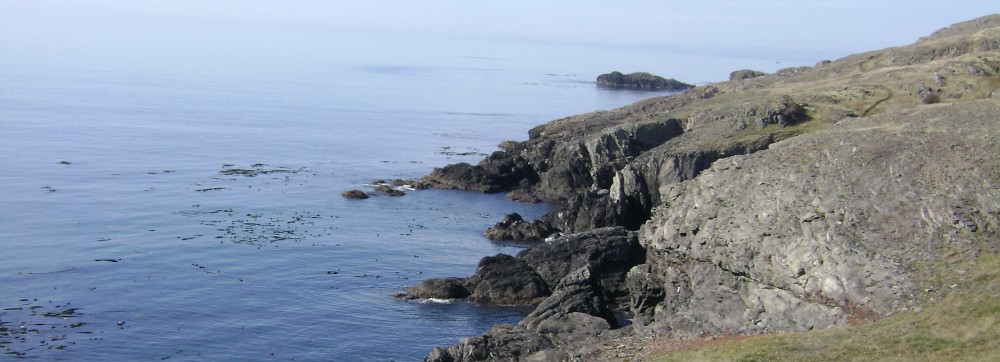Hi there–guess we all survived Post #666 together. Except for my mis-identifying our San Francisco son as Son One instead of Two–lo siento, m’hijos–everything worked. Let’s keep this trip going!
As the World’s Newbiest RVers, The Mate and I are learning the difference between camping and campering. What can go wrong with camping usually has mostly to do with the weather: are you too cold, too hot, too wet? Is your tent trying to blow away?
Campering, in contrast, offers an entire smorgasbord of issues. You are, after all, driving a tiny house.
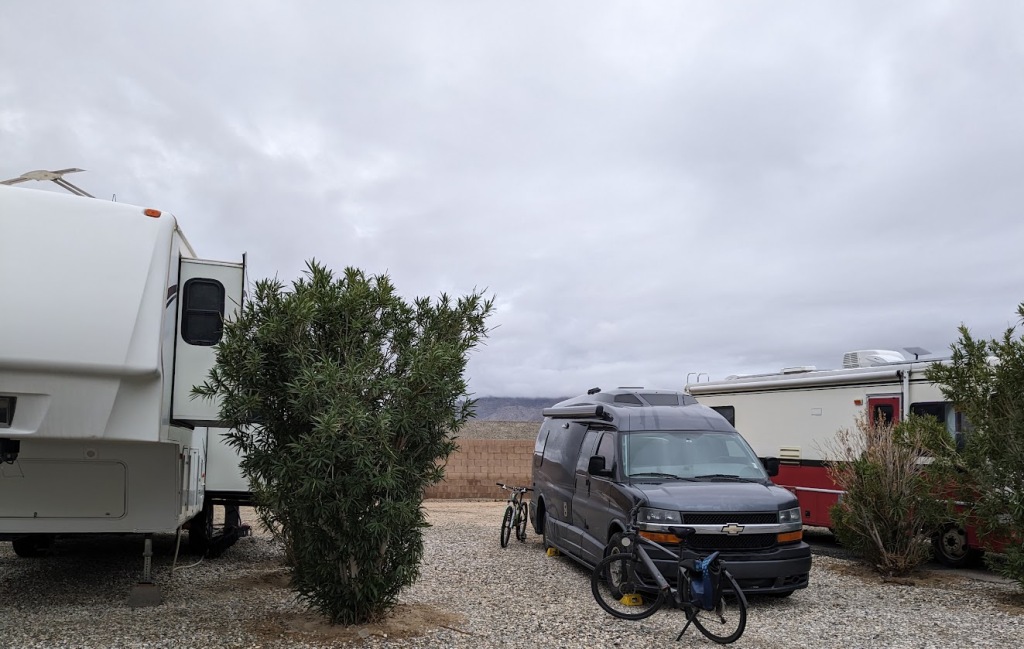
Again, I won’t go into details about propane and appliances and switches and all that other fun stuff that requires you to learn whether…that noise you’re hearing? Is that a GOOD noise or a BAD noise? Let’s just say the last week has been playing a bit of The Fortunately/Unfortunately Game with us.
Fortunately, we got out of Paso Robles and escaped the Atmospheric River drenching the coast.
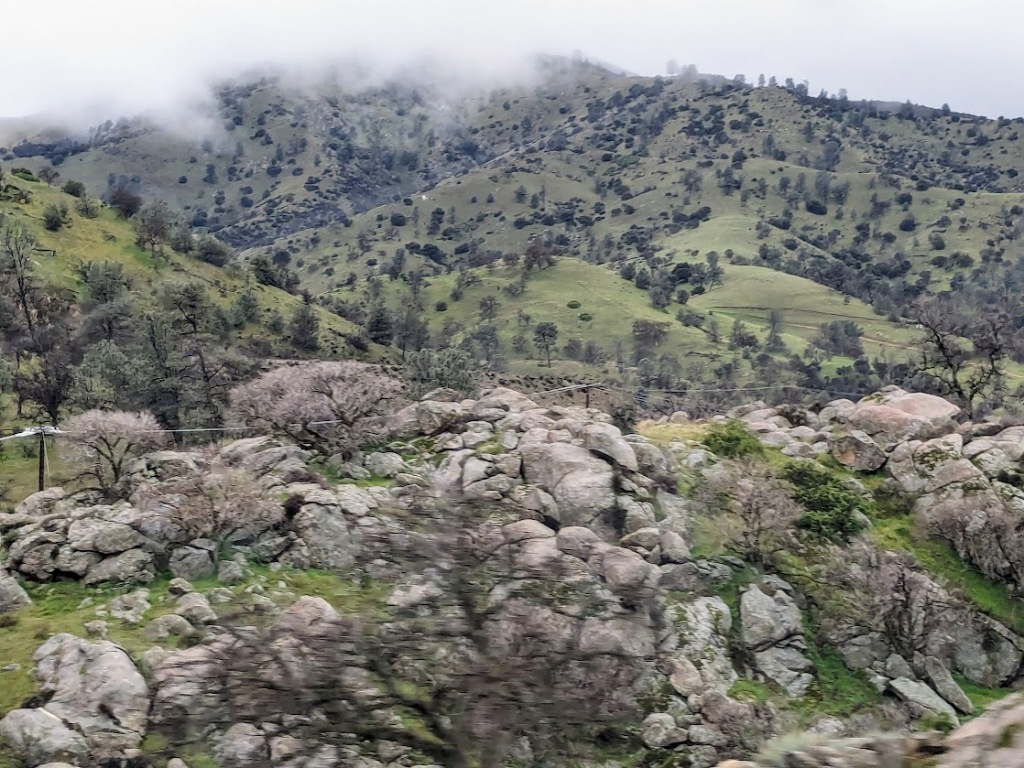
Unfortunately, the skies were still quite wet & gloomy in Twentynine Palms (see photo #1).
Fortunately, I got enough clearing to take Liza out on her first ride of the trip. Unfortunately, she immediately got a flat rear tire. (Lots of prickly stuff in the desert, even on the roads.)
Fortunately, we found a local bike shop and did errands while Liza’s tire was getting changed.
Unfortunately, Vanna’s battery completely died when we tried to start her up to go pick up Liza.
But FORTUNATELY, we weren’t out in the middle of Joshua Tree National Park, which has zero cell service…

…so we were able to call a husband-wife mechanic team, one of whom came to jump-start us and lead us back to their shop, where the other replaced our battery. And because we are driving a tiny house, we were able to make & eat lunch while all the work was done!
Next up, Joshua Tree, hooray! Camping in Jumbo Rocks, one of the premier campgrounds we’ve never been able to get a reservation for! Site 92. Where are you, 92? Oh, there you are. Why is someone else’s camper parked in you?
Unfortunately, I had written our reservation into the wrong day of my calendar. It was the night before. At least I couldn’t blame that one on machines.
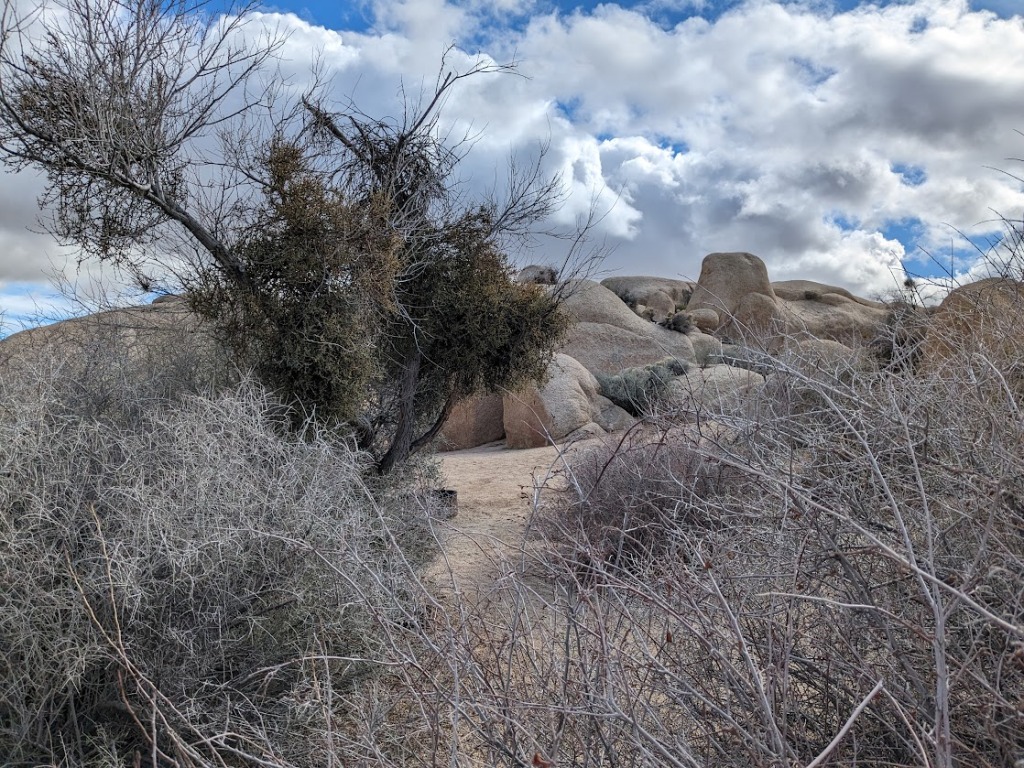
It was a long drive out of the park and back onto Interstate 10. But fortunately, as darkness fell, we were able to find an RV slot right on the Arizona border, which, in the morning, proved to look like this:

Despite the unimpressive scenery, the next Fortunate item was the fact that this campground was ever so much closer to our next. So when we got here…
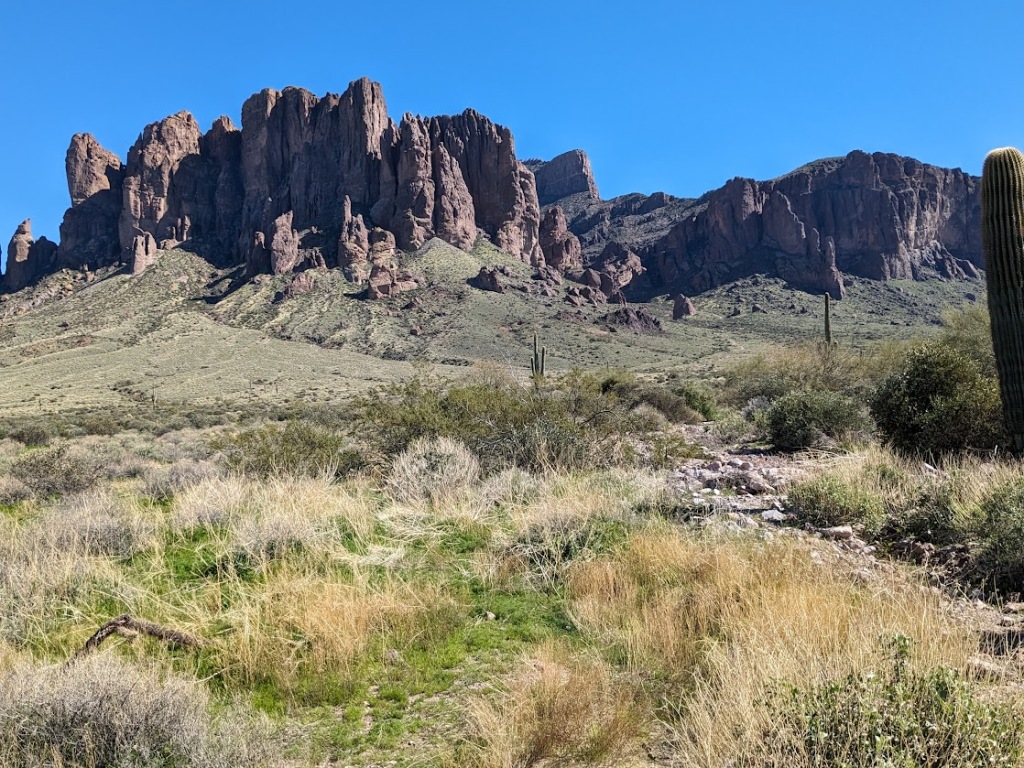
…we had ample time for both hiking and biking! Fortunate fortunate fortunate!

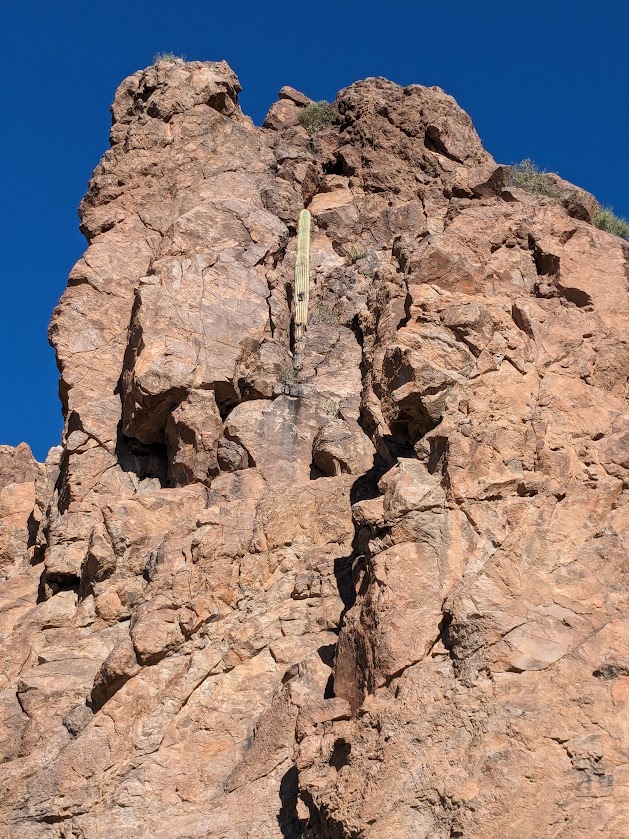
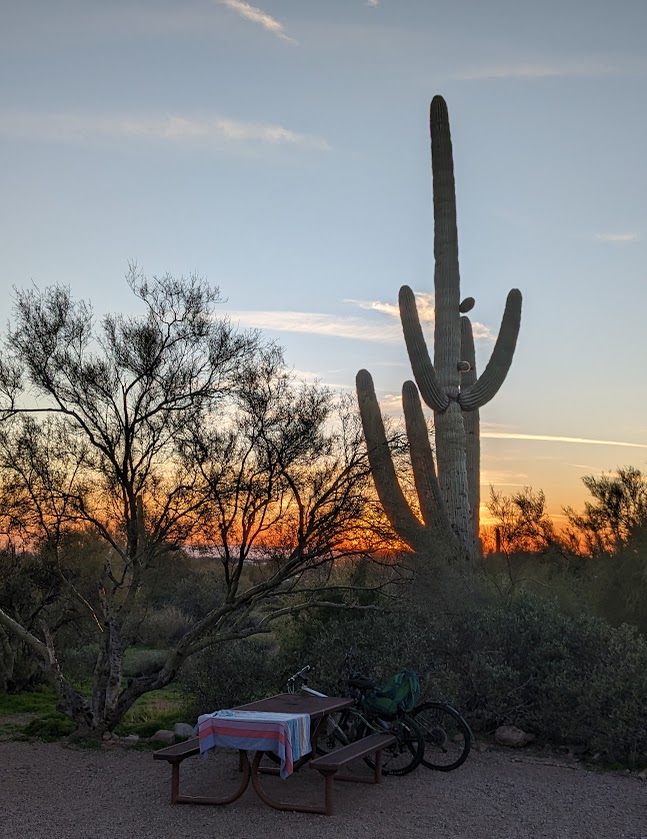
Once in Arizona, our fortune just kept improving. We stopped at the Tucson Airport to pick up our Adventure Buddies Kate and Tom…

…and headed straight for our Desert Happy Place, Western Side: The Chiricahua National Monument.
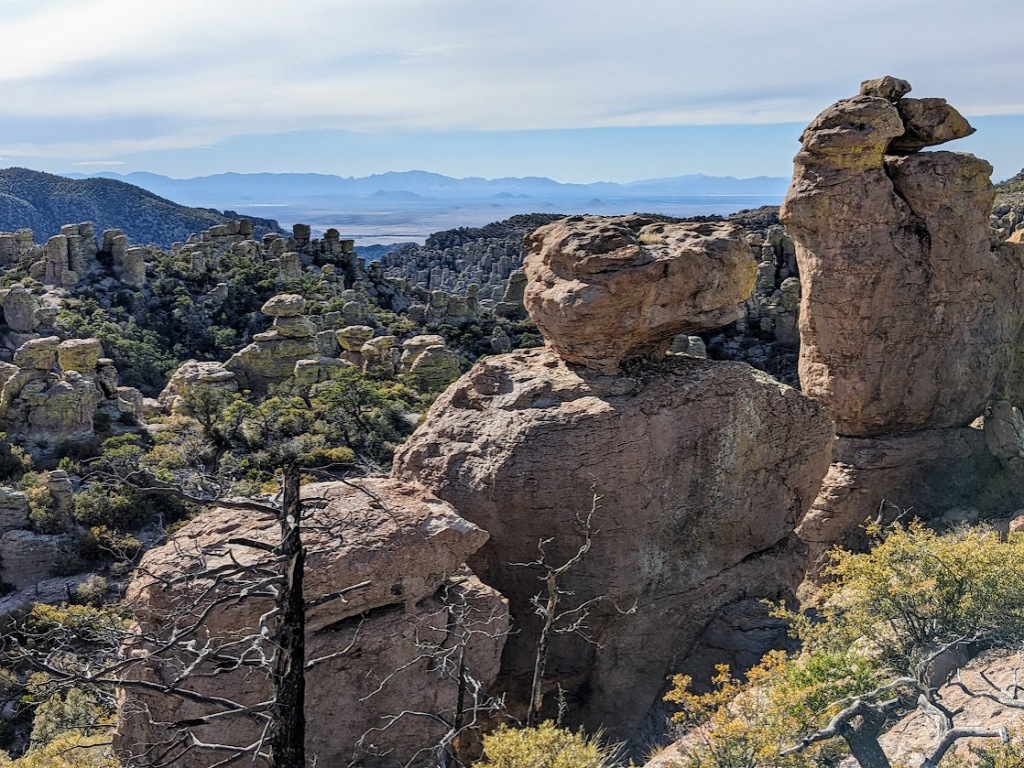
Since we pass through this area pretty much every road trip we can, I didn’t indulge my photographic impulses as much as I used to.

But, I mean, you gotta get SOME of the flavor of Chiricahuas 2024.

One more?
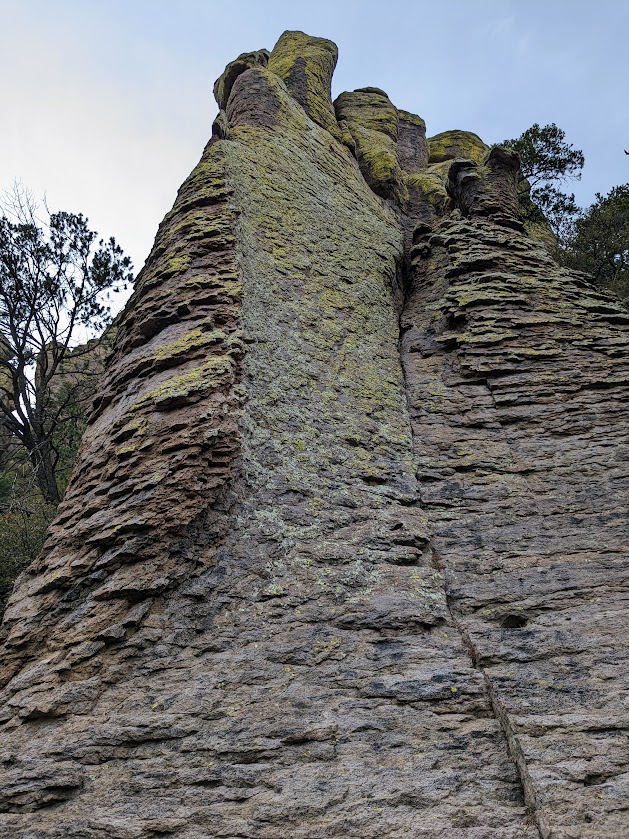
Since Vanna’s not equipped for four, we stayed in a motel, then next morning drove the LONG way around, into New Mexico and back into AZ, to the tiny hamlet of Portal and the east side of these lovelies:
Since our favorite rental cabin was sold, we’ve started coming to Cave Creek Ranch: quiet, sweet, gorgeous, low-key, and chock full of birds. (And birders.)
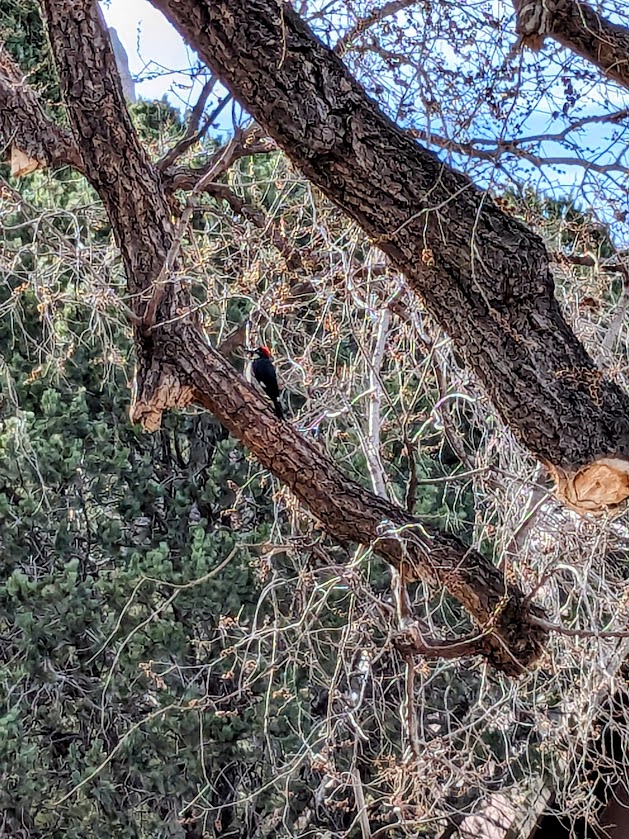
They even have cardinals here–yes, actual Arizona Cardinals! (State bird of my home state, NC; I’m fond of these guys.)
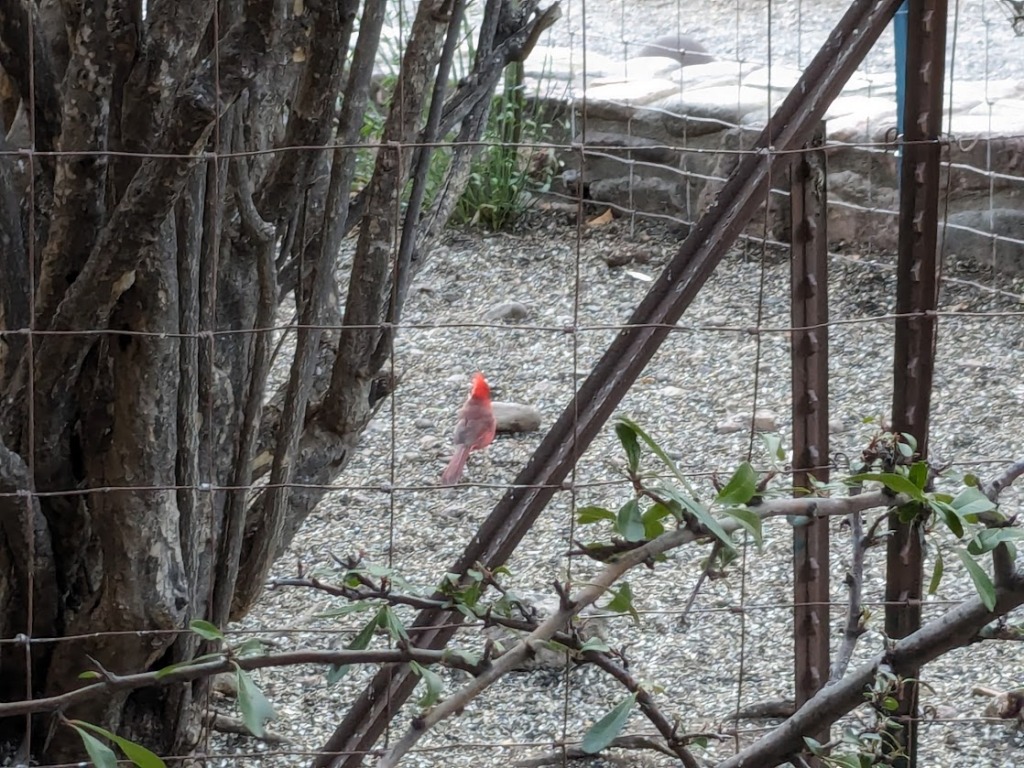
Amazingly, Cave Creek has a resident cat, who apparently doesn’t bother the birds. “Beauty” is HUGE…and missing an eye, thanks to tangling with a bobcat, they said.
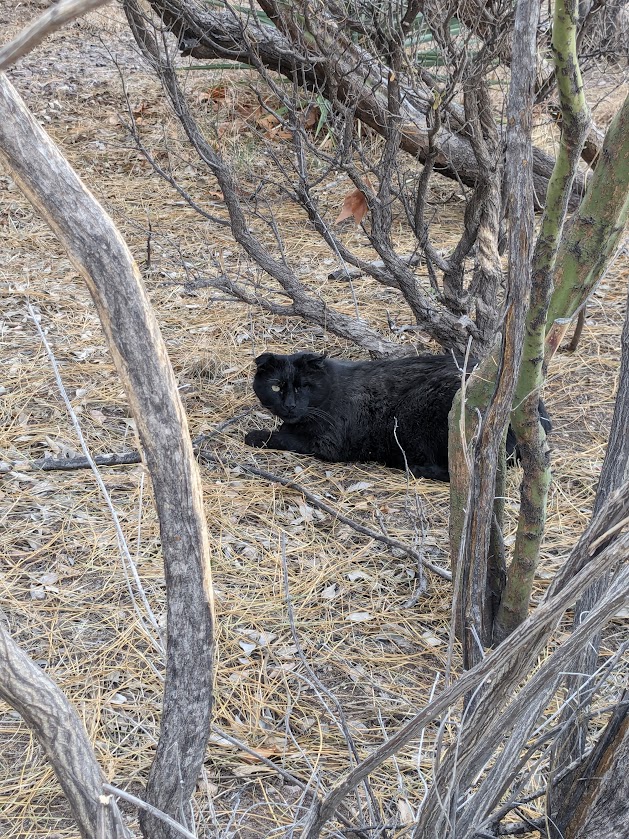
But my favorite critters around this desert oasis are the wild javelina. Or as I call ’em, piggies.

Really, though–who needs critters when you have crags?
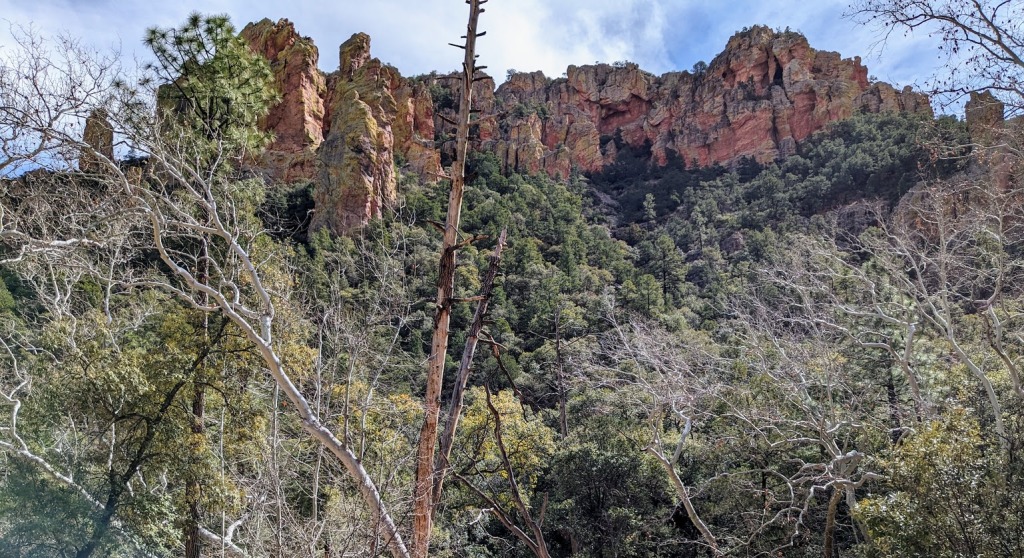
Our first night, the full moon rose over our cabin…
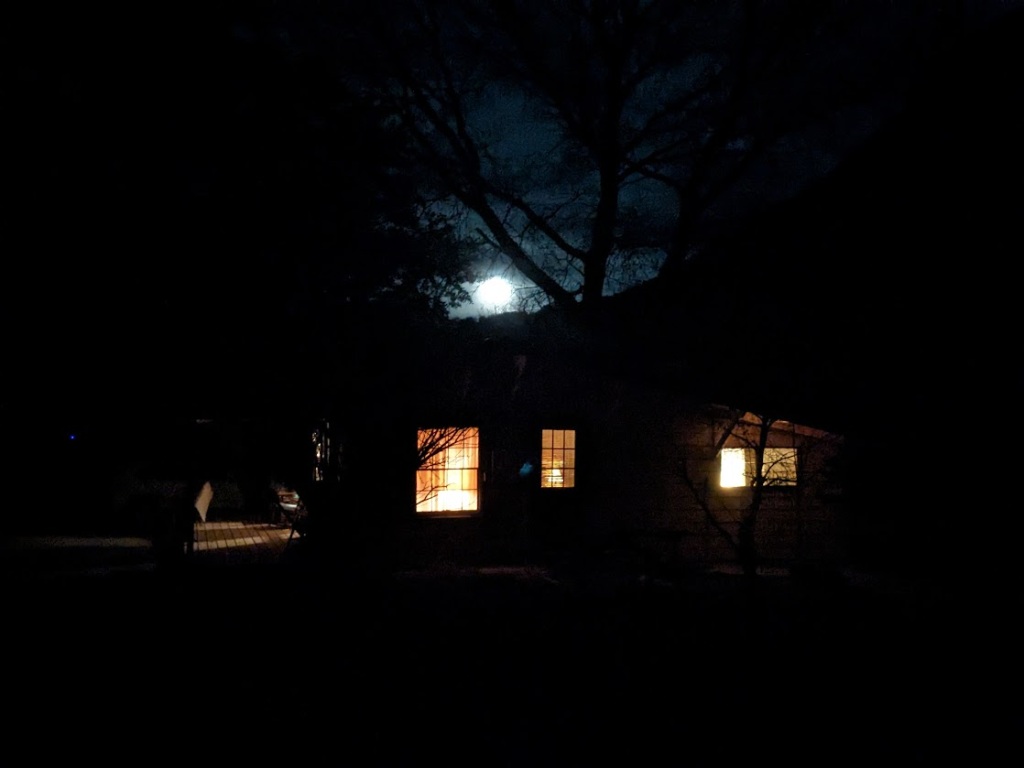
…and the next morning, the rising sun lit the crags an even darker color of salmon…
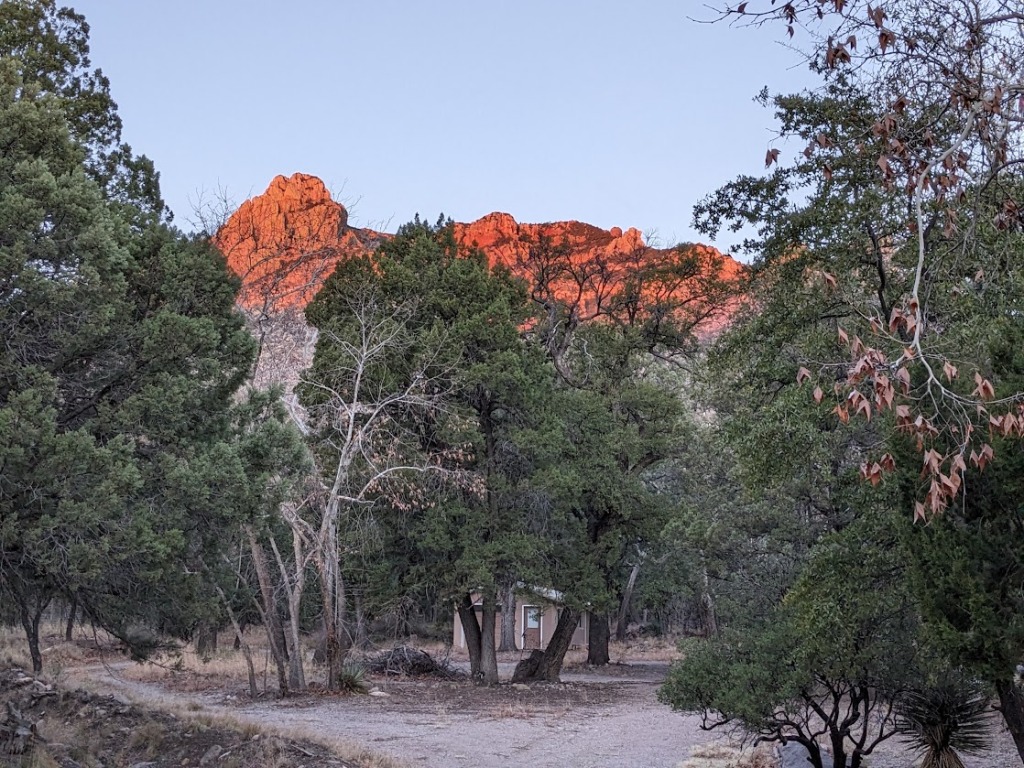
…and my heart sang. Being here, neither camping NOR campering, is enough. Back to #VannaLife tomorrow, but for now, I’m just going to wallow like the piggies.
